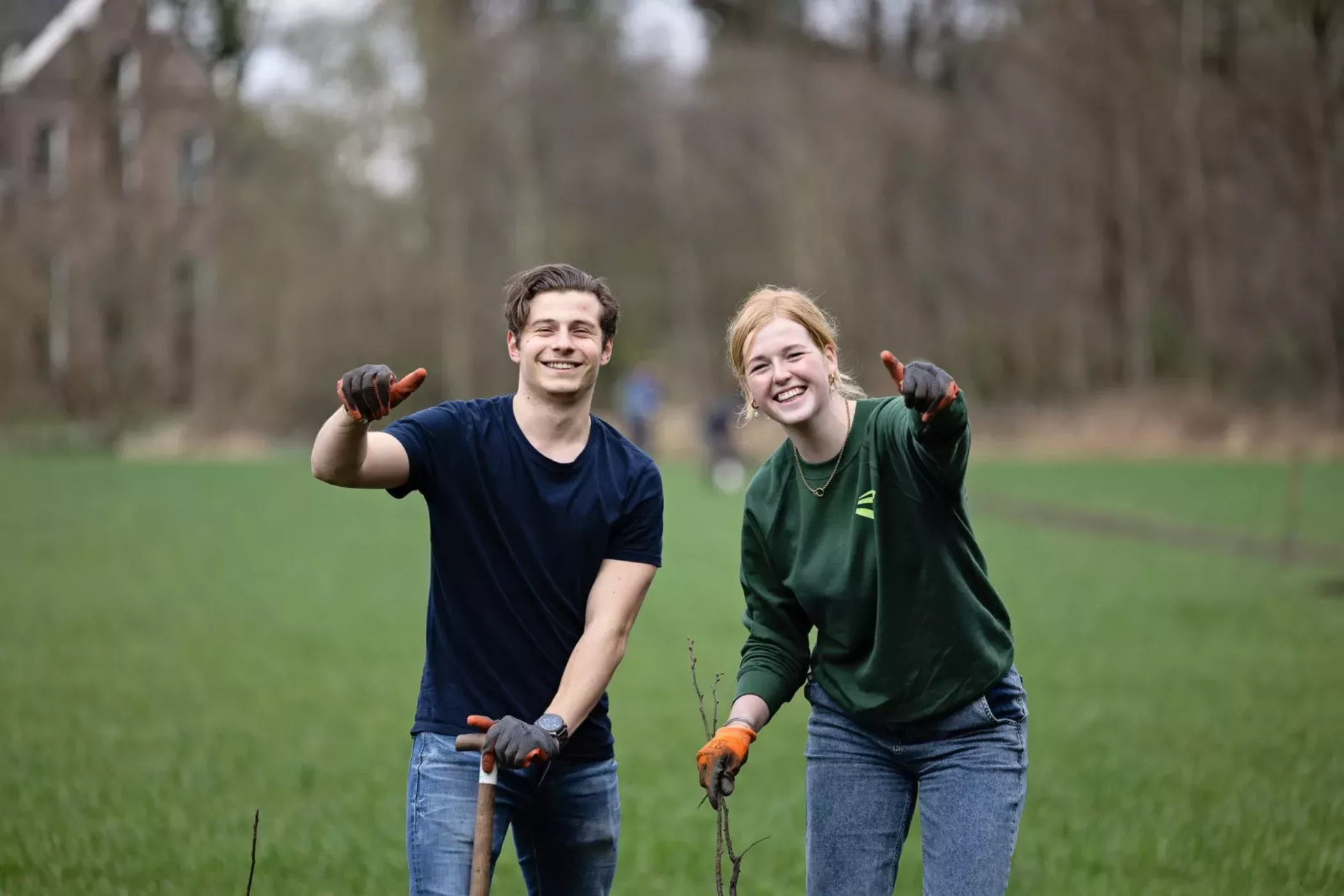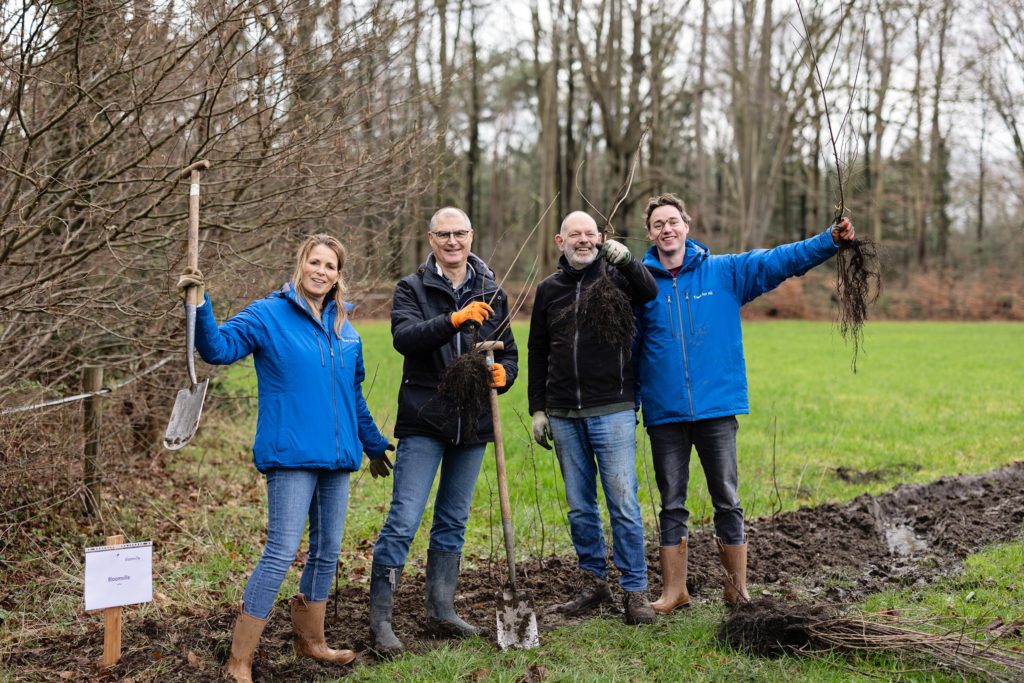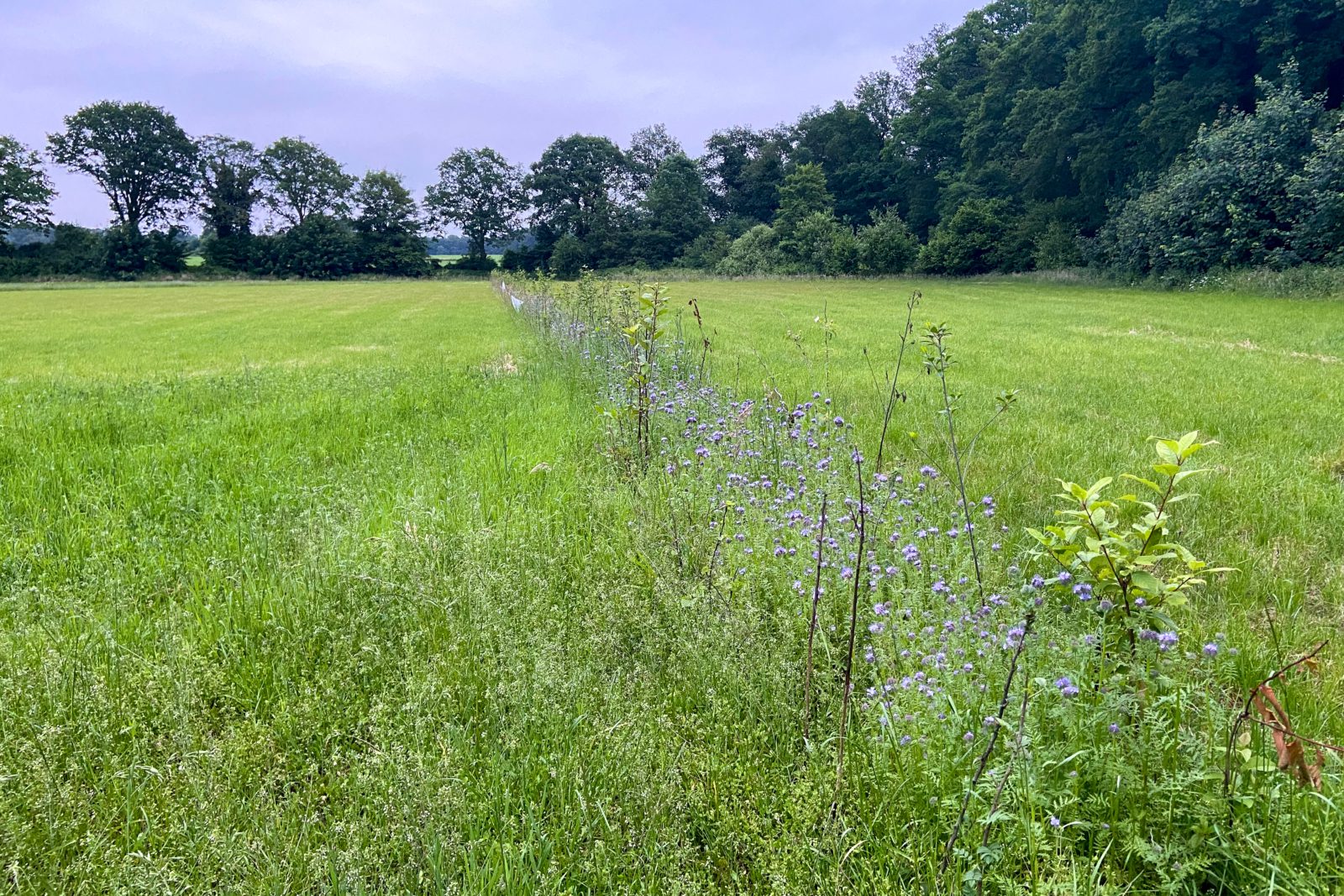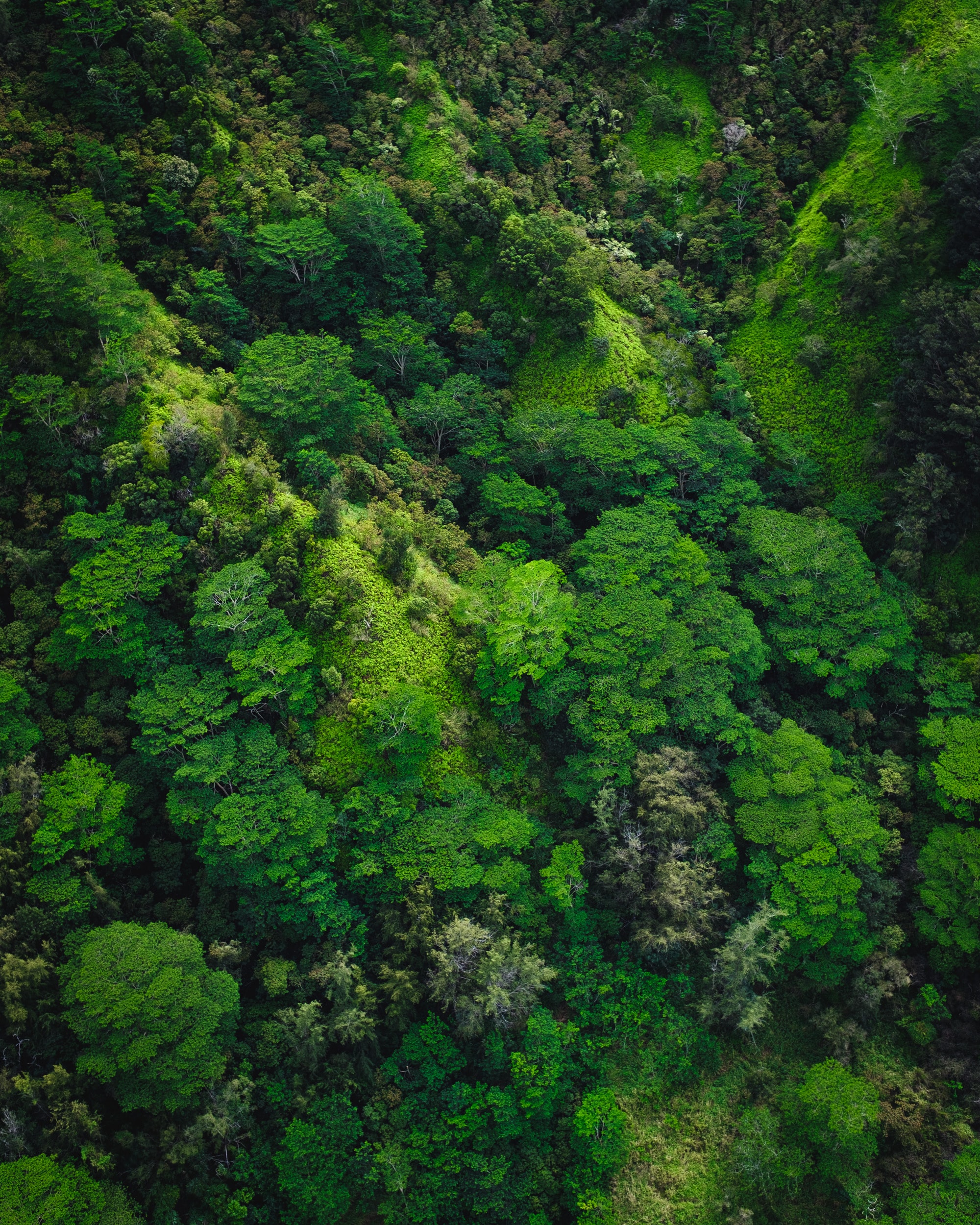Towards a green and sustainable countryside in Overijssel: results 2023-2024
17 September 2024

17 September 2024
In partnership with Landschap Overijssel, we’re greening the countryside in Overijssel. In total, we’re planting 290,810 trees and shrubs throughout the province. By planting landscape elements, we’re reinforcing the unique Overijssel landscape, as well as the habitats of numerous plants and animals.
trees and shrubs
participating landowners
planting season (Dec – March)
If you take a good look around the countryside, you’ll discover all sorts of landscape elements, including rows of trees, hedgerows and copses (green elements) and ditches, streams and pools (blue elements). Together they form the green-blue corridors of a landscape.
These landscape elements are crucial to the biodiversity of the Netherlands, as they attract numerous plants and animals. Unfortunately, over the past century around 60% of these elements have disappeared, due to urban expansion and the scaling-up of agriculture. Hedgerows and thickets, for example, were once used to divide up plots, but nowadays they’ve been largely replaced by barbed wire or have disappeared.
In this project, we’re helping the foundation Landschap Overijssel to create and restore landscape elements. Thanks to the support of our donors, last planting season we planted no fewer than 230,010 trees and shrubs, in elements like rows of trees, pollarded trees, coppices, hedgerows and standard fruit trees. In this way, we’re making the countryside greener and more sustainable again!
The new landscape elements have been planted on the land of more than 200 farmers and private landowners throughout Overijssel. These enthusiastic participants applied for the project through Landschap Overijssel. Many farmers would like to farm in a more nature-inclusive way and to contribute to reinforcing the (cultural-historical) landscape.
Private landowners also wanted to do something for nature, but weren’t always sure how to go about it. Landschap Overijssel exchanged ideas with them and discussed the possibilities, ranging from creating a wild flower border or pool to planting pollard willows or an orchard. But also filling in the gaps in existing landscape elements and reinforcing the existing greenery. For instance, a bare row of trees is transformed into a luxuriant windbreak. Thanks to this expert guidance, more trees and shrubs, and a greater variety of them, were planted than the participants initially had in mind.
Through Trees for All, the participants received the trees and shrubs, which they then planted themselves. The preparatory work was also done by the participants. Sometimes, a strip of land was worked with a rotary cultivator to make planting easier. After the planting, the field advisors checked whether everything had been planted correctly.
Last planting season, participants planted dozens of metres of hedges, for example in Vasse, Olst and Haaksbergen
One of the planting locations is the historic farmyard belonging to the Hövels family, in Vasse. Here, 2,300 trees and shrubs were planted, creating a windbreak and thickets. At a successful planting day in February 2024, the family received help from our corporate partners.
The planting on the farm in Vasse is a great example of how we are providing more trees and shrubs in the countryside and restoring the link between the agricultural landscape and the surrounding natural areas. This will ensure the return of plants and wildlife to the countryside.
Enthusiastic participants during tree planting day in Vasse in February 2024
After the participants had planted the trees and shrubs, field advisors from Landschap Overijssel checked up on the progress of the new plants. Fortunately, the extreme rainfall last winter and spring hasn’t caused too many problems. Landschap Overijssel reported that the planting has taken hold well. Even better, hardly any of the new trees and shrubs have been lost!
The participants manage their trees and shrubs for at least 10 years, for which they get tips from Landschap Overijssel and can take a course if they wish. In the initial years, for instance, it’s important to give the young plants sufficient water during dry periods and to keep them free of unwanted tall forbs.

The planting site in Vasse during tree planting day in February 2024

The plant site in Vasse in August 2024
When planting new trees and shrubs, it is normal that not all the planting will survive. With our project partners, we agree in advance on the percentage of failure we will allow within a project. Usually, this percentage is between 5 and 15%. Is the failure rate higher due to unforeseen circumstances? Then new trees are planted in the next planting season. This is also called pruning. In this way, we ensure a good start of the new landscape elements together!
In Overijssel, we planted native trees and shrubs that are typical of the area, such as alder, silver birch, downy birch, hornbeam, hawthorn, buckthorn, bird cherry, sessile oak, purging buckthorn and willow. These species occur naturally in the surroundings and were supplemented by species that have cultural-historical significance for the region.
This variety of species attracts all sorts of plants and wildlife. Breeding birds, amphibians, reptiles, butterflies, insects and small mammals all find shelter here and a place to breed. And the flowering and berry-bearing shrubs also provide an attractive source of food, which is great for biodiversity!
In addition, the landscape elements form linking structures in the landscape, creating ‘green highways’ that connect these smaller elements with bigger natural areas in the agricultural landscape. This allows wildlife to travel between different areas more easily.
Landscape elements also contribute to a better climate. Besides sequestering carbon, the wooded banks, windbreaks, hedges and hedgerows also capture particulates and nitrogen. Through this project, we’re therefore contributing to major goals from the Climate Agreement to reduce carbon and nitrogen levels.
Landscape elements also provide oxygen, clean air and patches of shade on hot days. And they contribute to environmentally friendly agriculture, as they attract insects for natural pest control. So a pleasant and healthy environment is created for people and wildlife in the countryside.
The project will run until 2025. In partnership with Landschap Overijssel, we’ll be planting another 60,000 trees next year to expand the green-blue corridors even further. Onwards and upwards to a green and sustainable countryside! In the mean time, Trees for All will remain involved in monitoring the project for at least ten years.
If you’d like to read more about the benefits of landscape elements and the value they add to our surroundings, take a look at our website.

Without the support of our donors, this project would not have been possible. Together, we have made the world a little greener again. See you next planting season!